Summer, you are fabulous. The time when, guaranteed days off from work or not, we all rally to travel by packing up our bikinis, sunscreen, shorts, and sunglasses to head everywhere from Miami to Thailand. However, there’s long been something joining us on these summer escapes that’s much scarier than our boss — bugs. These pesky critters, ranging from mosquitoes to midges to spiders to cockroaches, often thrive during the warm-weather seasons, emerging from their eggs to harass us when we’re trying to get our tan on.
If you’re traveling to any destinations that see a summertime infiltration of creepy-crawlies, you best know what you’re getting into, whether that’s by getting a vaccination, bringing insect repellent, or ensuring that your net is ready to do its job when you’re trying to sleep. Not keen on fighting the bugs during your trip? You can always check out the best vacation destinations where mosquitoes will not be your problem instead.
Los Angeles, California
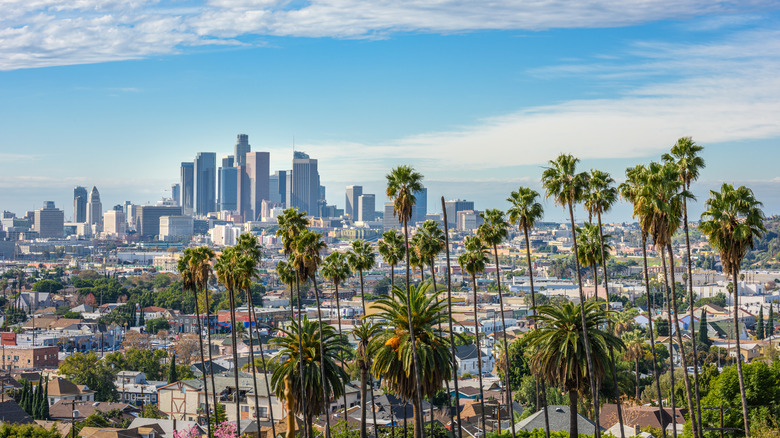
The SoCal city that’s a headquarters for glitz and glam has been garnering a title that’s anything but. In 2021, 2022, and 2023, Los Angeles was named the most mosquito-infested in the U.S. The unfortunate ranking was given by the people who can say it from experience — pest control company Orkin, who created the list based on the cities where they responded to the most calls. Those living in Tinseltown can blame the endless list of neighborhood pools for the pesky bugs. Mosquitoes lay their eggs in standing water, so these pools, as well as rainfall, ponds, and even minuscule water sources like a bottle cap left on the ground, can turn into a maternity ward for the pests.
The situation is only compounded by the fact that the region’s winters are short and getting shorter, and more than 50 types of mosquitoes call California home. That includes those that carry West Nile Virus, with 423 cases reported in the state in 2023. That’s more than double the cases reported in 2022, showing that the summer itch is only getting worse. Unfortunately, mosquitoes aren’t the only bugs you might get a smooch from during a Los Angeles summer. Orb-weaver spiders, which reach their peak size during the summer, are also more likely to be seen during the season. They are known for their big Halloween-stye webs, and you’re bound to see the eek-inducing sight during the warmer months. City of Angels? More like City of Itching.
New York, New York
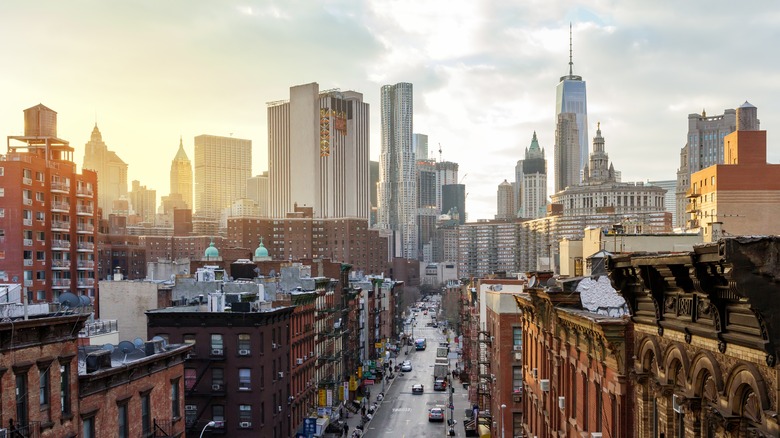
New York City might have a whole lot fewer pools than Los Angeles, but it still has plenty of aspects that keep mosquitoes flocking. Even though New York City is a winter wonderland, its summers are hot and humid, making it the perfect mosquito playground during the warmer months. Plus, besides heat and standing water, mosquitoes also love bright windows, porch lights, and gaps between walls and floors, and with so many apartments — New York City has around 8 million of them — it’s no surprise that mosquitoes love the Big Apple.
Due to the amount of mosquitoes (New York City has 51 species of the bugs), the city’s Department of Health attempts to control them every April through October. Larvicides and pesticides are sprayed in uninhabited marshy areas, and standing water is prohibited during mosquito season. If people are found with standing water outside of their home that has been sitting for five days or more, they could get a fine. That includes everywhere, from bird baths to the inside of tires.
In the summer, mosquitoes have other buggy company in NYC. Critters like centipedes, moths, wasps, and ants thrive in the City That Never Sleeps. Ants, for example, start waking up from hibernation in the summertime, and they love hiding out in rotting wood, insulation, and wall cracks, which are aplenty in New York City.
Philippines
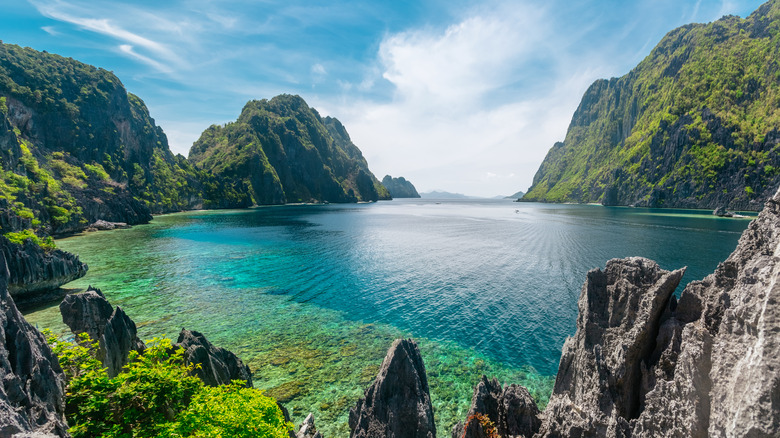
Danilovi/Getty Images
If you’re escaping to the lush, tropical paradise that is the Philippines this summer, you have more to worry about than getting sunburnt on its beautiful beaches. Mosquitoes are a major problem in the South Asian country, as it is home to nearly 280 species of the bug. Some carry serious diseases like malaria, Zika virus, and dengue fever. It’s so bad that dengue fever, which has no cure, is endemic in the country. Crisis24 reported 226,000 cases in 2022 alone. Plus, you’re most likely to get bit by a mosquito in the Philippines during its rainy season, which happens to be the summertime.
To prevent a mosquito bite and end up with a scary disease, those traveling to the Philippines can opt to take malaria pills before their trip or get a specific vaccine for dengue fever. People can also take easy steps to repel mosquitoes by wearing long sleeves and light colors, not using scented deodorants or shampoos, and using mosquito nets when necessary. During your stay in the Philippines, you should also look out for cockroaches, which love the hot temperatures of the summer. Although their names say otherwise, German and American cockroaches flood the Philippines. They especially love busy Filipino households, which are often home to intergenerational families with plenty of food that cockroaches love to feed on.
Miami, Florida
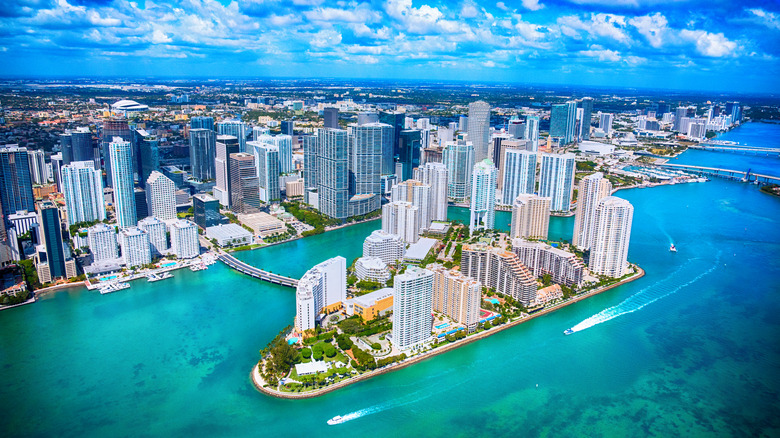
Art Wager/Getty Images
A popular city for tourists, people from all over the world love to head to Miami for its endless sunny days filled with hot weather and beaches. Unfortunately, those conditions also make the Sunshine State ripe for mosquitoes. Since Florida is often on the path of hurricanes, it’s a hotspot for standing water, where mosquitoes love to lay their eggs. Florida has been slammed by more hurricanes than any other U.S. state, and nearly half of all hurricanes that have hit the country have hit Florida on their way, meaning there’s always an opportunity for water to sit and create a perfect nest for mosquitoes.
Plus, Miami has a lot of people — it is the second most populous city in Florida, behind only Jacksonville. Since mosquitoes are attracted to body heat and carbon dioxide, Miami is a fitting dinner table for the pests. Florida is also super humid — so much so that nearly every day of the year has been deemed a “mosquito day.” And a bite also isn’t just an itchy nuisance here. Due to Miami’s location, some mosquitoes carry diseases like Zira virus, Chikungunya virus, West Nile Virus, and dengue fever, so visitors and residents need to be mindful of keeping bug interactions to a minimum.
Louisiana
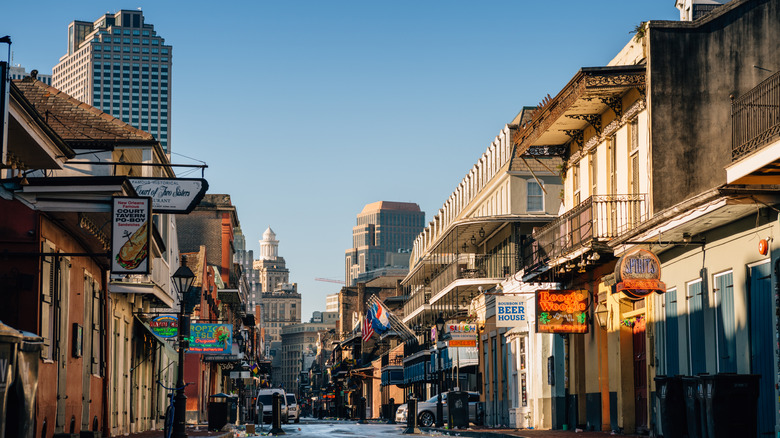
Ferrantraite/Getty Images
Thought you only had to worry about nursing a hangover in New Orleans? Apparently, that isn’t the case. The fight against termites costs New Orleans residents $300 million annually, more than any other U.S. state. The problem is so bad that Operation Full Stop works in New Orleans, which collects data on Formosan termites in the city and shares it with pest control experts across America. These termites have been a challenge in the state ever since arriving on military ships coming from East Asia after World War II when they arrived on military ships from East Asia. Throughout Louisiana, residents have to watch for nine types of termites, including the dark southeastern subterranean termite, tropical rough-headed drywood termite, western drywood termite, and dark southern drywood termite, all of which thrive in the summer.
Unfortunately, termites aren’t the only bug you’ll likely see in Louisiana in the summertime. Like Florida, Louisiana’s hot and humid climate, frequent hurricanes, and plentiful bodies of water make it the perfect home for mosquitoes. Even scarier, Louisiana has one of the highest rates of West Nile Virus neuroinvasive disease cases in the United States. To keep the mosquito population under control, especially during the summertime when the rates of the bugs are at their highest, some cities, like New Orleans, have a dedicated Mosquito, Termite, and Rodent Control Board.
Atlanta, Georgia
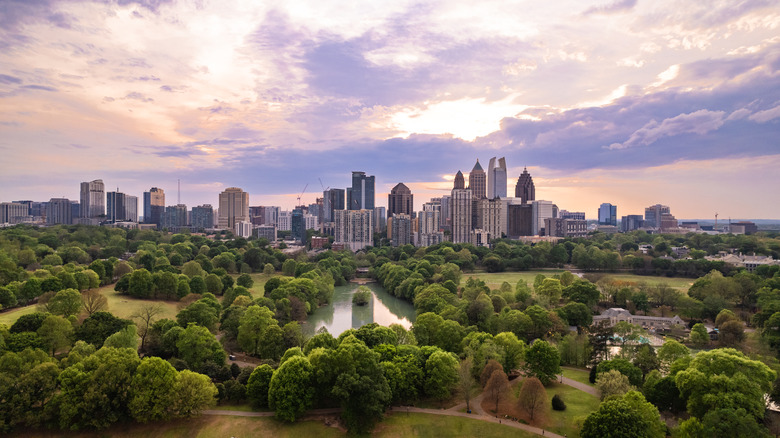
Marilyn Nieves/Getty Images
Louisiana is far from the only state with a termite problem. Around 20% of all homes in Georgia have been or will be attacked by termites, making it one of the worst spots in the country for these critters. Georgians deal with three types of termites: the eastern subterranean termite, the aggressive Formosan termite, and the drywood termite, which is mostly found in the Peach State’s coastal areas.
You’ll have another critter to worry about in Georgia when you’re outside of four walls. Although Los Angeles has since taken the dishonor of being named the worst city in the U.S. for mosquitoes, that title once belonged to Atlanta. And even though it’s not number one anymore, mosquitoes still love the hot and humid temperatures of the city, especially between March and October. Over 50% of the days are called “mosquito days” in Atlanta, meaning the conditions are ripe for the bugs to thrive and grow faster due to warm weather. The conditions are perfect for another reason — water. Mosquitoes are born in water and don’t like to venture more than 3 miles from their birthplace. In all of North Georgia, pretty much everywhere has water within 3 square miles, meaning virtually no Georgia home is safe from mosquitoes. Some carry diseases such as West Nile Virus.
Thailand

Wichianduangsri/Getty Images
Unfortunately, there’s no such thing as a mosquito-free time to visit Thailand since the tropical country’s year-round hot and humid climate means an environment perfect for pests. However, the rainy season — from June through October – is even worse for mosquitoes since this means plenty of puddles for the bugs to lay their eggs in. Some of the 117 mosquito species in the country also carry diseases like dengue fever, Chikungunya, Zika virus, and malaria. Although it’s rare to actually pick up one of these diseases here, if you’re one of the few that do, you could present symptoms for the rest of your life or even succumb to the disease.
Due to the seriousness of mosquito-transmitted diseases, the country is full of hacks to keep the bugs at bay, all of which are crucial tips for travelers visiting Thailand. For example, pretty much anywhere you stay will include a screen on the window to block out mosquitoes. Even if you stay in Thailand’s jungles, you’ll likely be given a mosquito net for your sleeping quarters. Plus, some of Thailand’s famously spicy dishes have become staples for residents due to their ability to help the body emit odors that mosquitoes don’t like. If you do get bitten, you can try a homegrown remedy to alleviate the itch, such as tiger balm, which many Thai people say is the best way to relieve bug bites.
Chicago, Illinois
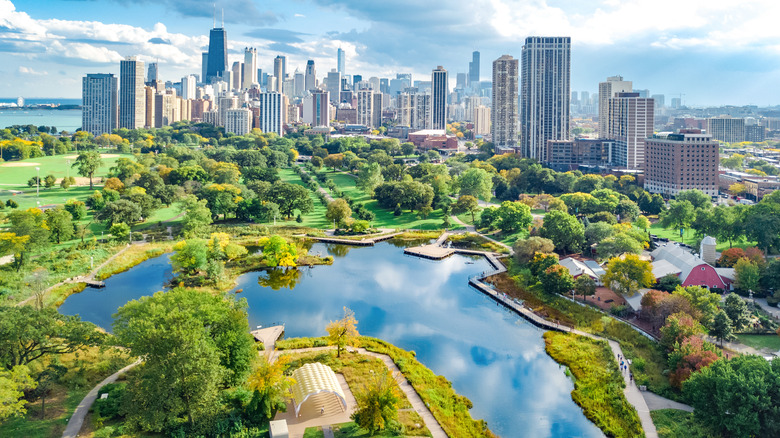
JaySi/Shutterstock
Chicago is in for unwelcome guests in 2024. Two types of cicadas, which can stay underground for 13 and 17 years, will emerge together for the first time in 221 years. In the spring and early summer, they’ll make their debut — maybe even as early as April. And even once they die by June, locals will still have to grapple with them, as the bugs will leave their bodies behind, which also comes with a nasty smell. In 1990, some people reported having so many cicada bodies on their properties that they had to unpack their snow shovels to remove them. It’s likely that within every single acre, anywhere from 50,000 to 1.5 million cicadas will emerge from their long hibernation.
Those cicadas will also have unwelcome neighbors in mosquitoes. Mosquitoes that once thrived in the South are now thriving in Chicago since Southern temperatures in some cities have actually gotten too hot for mosquitoes to live. That’s a far cry from generations ago when the notoriously cold winters of the Windy City meant that Chicago didn’t have many mosquitoes. However, climate change is changing all of that. Now, winters in Chicago are much balmier, and the summers are hotter and more humid. Those rising temperatures have brought mosquitoes with them, so much so that Orkin named Chicago the second-worst city in the country for mosquitoes in 2023.
Texas

4kodiak/Getty Images
We wish we could tell you just one city in vast Texas, home to 29 million people, is the worst for mosquitoes, but unfortunately, we just can’t. It’s the only state in the country with two cities – Dallas and Houston — named in the top ten of Orkin’s 2023 list. Other cities like Austin and San Antonio are also heavy with the bugs. Most of this colossal state is a haven for mosquitoes, especially in the middle and eastern regions where there is enough rain for them to thrive. It can be a year-round problem that only exacerbates when it gets hotter and wetter in the summertime. One of the most common types of mosquito in Texas is the Culex mosquito, which is particularly adept at hibernating during the winter, only to make a grand entrance in the summer.
What makes the Lone Star state perfect for the 80 species of mosquitoes found there? Pretty much everything. Texas gets hot and humid, its big cities have lots of people and potential mosquito meals, and parts of it receive more than 30 inches of rain annually, ideal for mosquito breeding. Luckily, mosquito-transmitted diseases in Texas aren’t a huge problem, as there aren’t many cases of dengue fever, West Nile Virus, and malaria reported. To keep the numbers down, programs exist in Texan communities to spray and monitor mosquito happenings.
Parkhill, Ontario
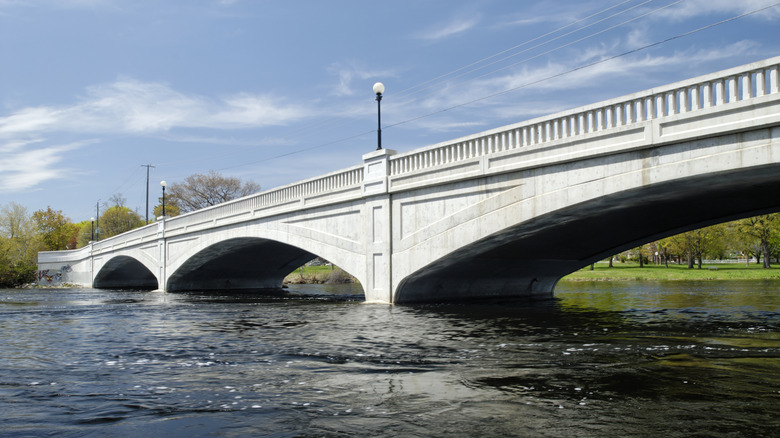
Randyromano/Getty Images
Due to its 62 acres of standing wet areas and rainy spring and summer seasons, Parkhill in Ontario has always had a penchant for mosquitoes. But in 2011, the problem got so bad that it made national news — the town was even dubbed “Skeeterville” — and residents were forced to stay inside for the summer. Some even sold their homes. And when you see the numbers, you can’t blame them. In just a month, more than 50,000 mosquitoes were caught in a single trap, and that year, around half a million dollars was spent trying to quell the pests. In the years that followed, things improved, but the town is still forced to continue to confront its unwelcome buggy neighbors. Larvicide must be applied periodically during the spring months to stagnant waters to keep mosquito babies at bay. Residents are also encouraged to report any standing water they see in the springtime. Once summer arrives, the area health departments monitor for West Nile Virus and other mosquito-transmitted diseases by sampling waters from 250 sites.
West Nile Virus is a worry with some of Parkhill’s 13 species of mosquitoes, but luckily, no one has been diagnosed with West Nile Virus from a Parkhill mosquito since 2005. Residents do have to worry about mosquito aggression, though. In 2013, a new subset of mosquitoes emerged in the town, which, unlike their 2011 forefathers, came out during the day and seemed particularly hungry.
Washington, D.C.
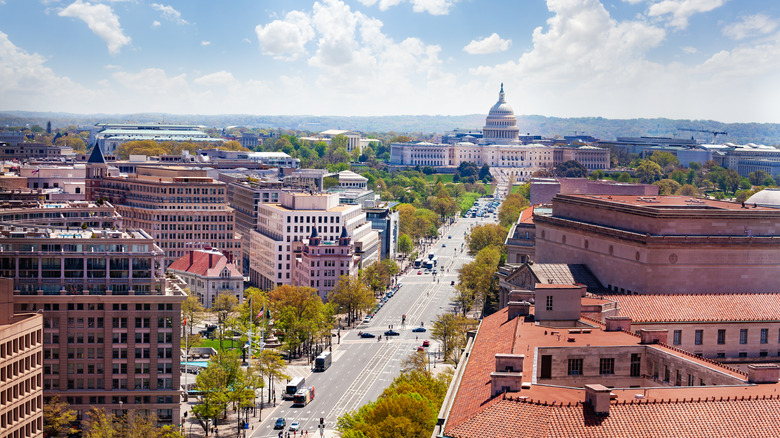
Sergey Novikov/Shutterstock
Washington, D.C. may be known as “The Swamp” partly because it was built on a swamp, but that’s not the reason the little bloodsuckers love the district so much. Like many other cities on this list, the temperature is a major reason. Even in the dead of winter, Washington, D.C. doesn’t usually get incredibly cold, meaning mosquito eggs can make it through the season. Plus, with so many water sources in the area — such as the Potomac River, the Washington Channel, and the Tidal Basin — mosquito parents have plenty of places to choose where they lay their eggs. More people means more meals and more places to find standing water since any concave item can form a nest for mosquitoes.
Even worse, you never get a respite from D.C.’s mosquitoes. That’s because the district is home to two types which feed at opposite times — the northern house mosquito, which feeds at sunset and sunrise, and the Asian tiger mosquito, which feeds during sunlight hours. The Asian tiger mosquito is known as being particularly ravenous compared to other species. Unsurprisingly, Orkin has named Washington, D.C. one of the worst U.S. cities for mosquitoes for years. In 2023, the city came in sixth, and it’s only getting worse as mosquito season continues to lengthen.
Scotland

Simonbradfield/Getty Images
In Scotland, during the summertime, it’s not the mosquito that tourists have to worry about, but the midge — a small fly that loves drizzly days, sunset and sunrise, sweat, and hanging out in groups. They may be small, but they’re no joke, as revealed by this TikToker who shows the icky reason to think twice before visiting Scotland in the summer. Midge irritation and bites are so problematic to campers, walkers, and climbers that people traveling to certain areas of Scotland from May to September are advised to net their tents or, better yet, especially in July and August, stay in a hotel.
While outdoors, travelers should wear netting over their bodies or heads to keep the bugs away, especially in the worst midge areas like the northern and western parts of Scotland. However, depending on the winter temperatures, the ensuing summer might not be as bad for midges since a long and cold winter might keep them away until later in the year.

